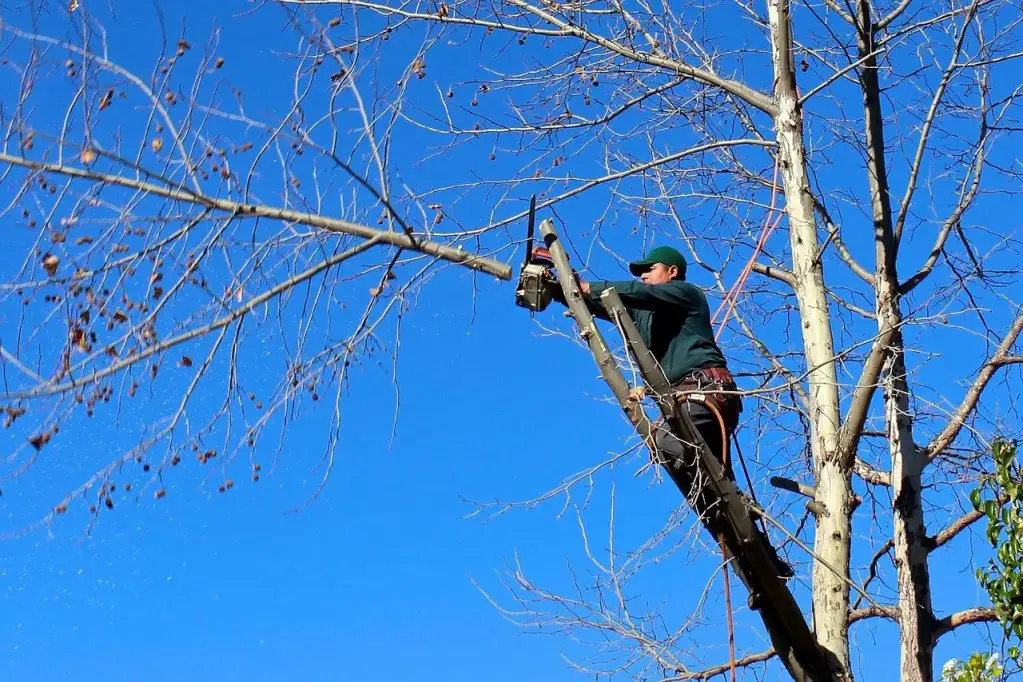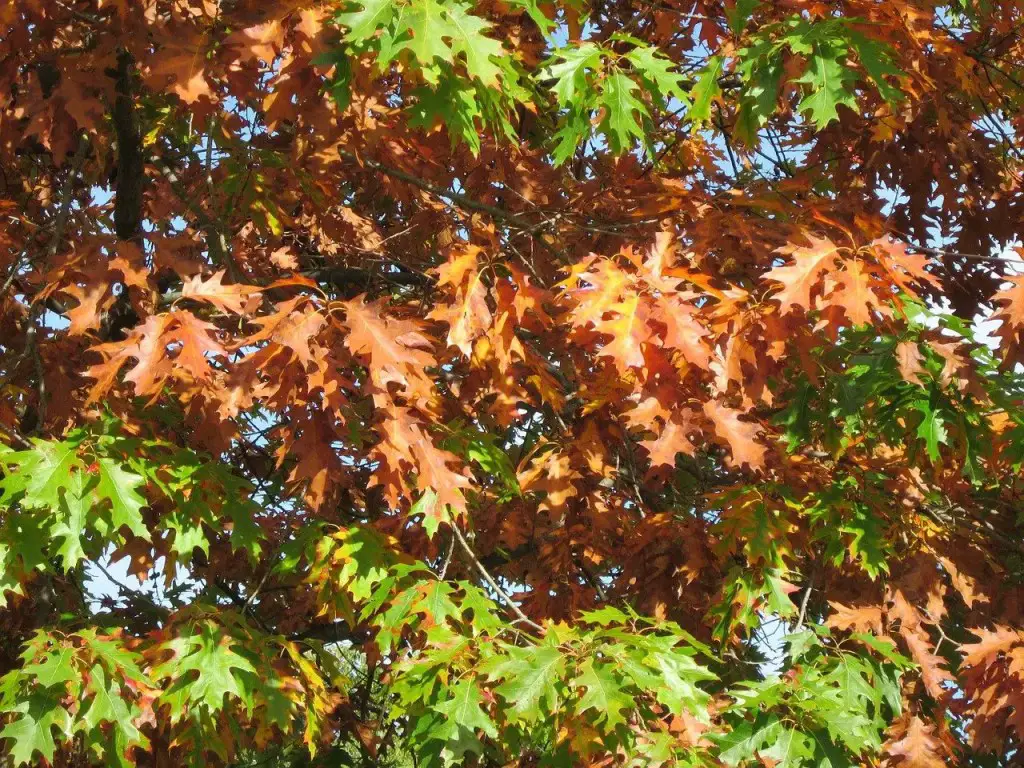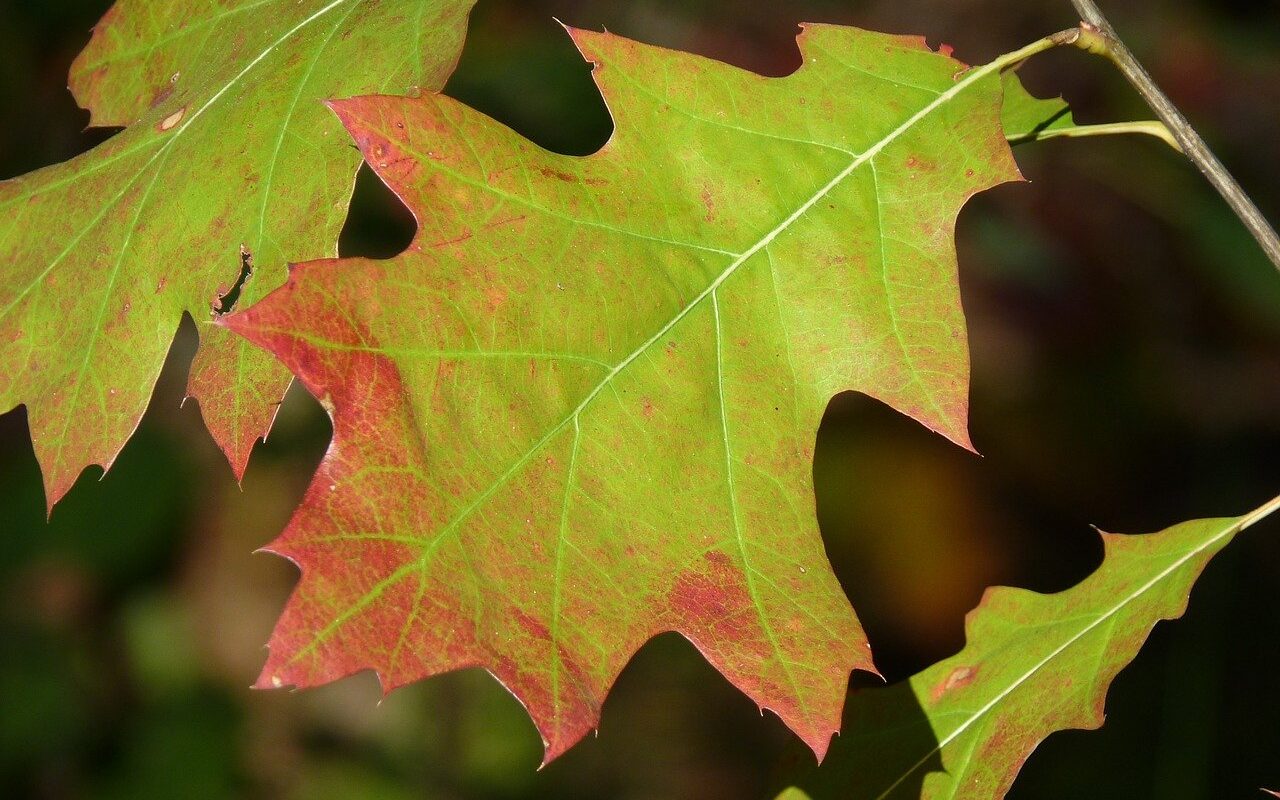The Michigan Department of Natural Resources has issued a warning about Oak Wilt disease. This fungus is extremely prevalent this Spring and Summer. We have lost one 160-year-old Pin Oak to the fungus and our neighbors. Unfortunately, other Oak trees are suspected of carrying it too.
The U.S. Forest Service noted that The exotic fungus, Ceratocystis fagacearum, causes oak wilt. This fungal infection kills tens to hundreds of thousands of oak trees in the Midwest and Texas every year.
Specific species of sap beetles are one way the fungus travels. If contaminated beetles land on fresh wounds like those occurring from storms or tree pruning, the tree will likely become infected.
One of the trees susceptible to the disease is the Northern Pin Oaks which are prevalent along the shore and in the dune forests and wood lots in the Upper Thumb. Here is the update from the DNR.
Help prevent the spread of oak wilt: Avoid pruning or wounding oak trees between April 15 and July 15

Healthy Oak trees have a reputation for being mighty, but these majestic trees need our help in spring and early summer to prevent the spread of a microscopic killer.
From April 15 to July 15, oak trees are at high risk for oak wilt, a serious fungal disease that can weaken white oaks and kill red oak trees within weeks of infection. During this time of year, flying beetles can carry spores of the fungus from tree to tree, and the fungus can infect through tree wounds left by pruning or storm damage.
“The guidelines against pruning oak trees during this time can help prevent the spread of the disease,” said James Wieferich, forest health specialist in the DNR’s Forest Resources Division.
The fungus can move from an infected oak to neighboring oaks through root grafts. Adjacent oaks may be connected to other trees or grafted through tree root systems depending on tree size. Roots of large trees can reach 100 or more feet. Left untreated, oak wilt will continue to move from tree to tree, killing more red oak over an increasingly larger area. As more trees die from oak wilt, more fungal spores are produced, which allows the beetle to carry infection to new locations. Trees in the white oak family are more likely to survive an infection because they can compartmentalize the fungus.
Oak wilt was first identified in Michigan in 1951, and this invasive species is now widespread across the state. An invasive species was introduced to Michigan’s environment from elsewhere and can cause harm to the environment, economy, or human health.
Red Oaks are Vulnerable; Can Die Within Weeks of Infection
Species of oak trees in the red oak family are most susceptible to oak wilt. These trees have leaves with pointed tips and include black oak, northern red oak, and northern pin oak. Trees in the white oak group have rounded leaf edges and include white oak and swamp white oak. They are less susceptible.
Signs of Oak Wilt most often appear from late June through September. Infected trees will suddenly begin with leaves wilt from the top-down, rapidly dropping leaves, which can be green, brown, or a combination of both colors.
If you have a tree that gets damaged during the risk period from April 15 to July 15, immediately cover all wounds with tree-wound paint or latex-based paint.
Firewood can harbor the fungus, and it’s one of the ways the disease spreads, resulting in new infections, so don’t move firewood from place to place in the state. If you suspect your firewood is infected with oak wilt, you can help slow the spread by burning it, chipping it, or debarking it before April. Once the firewood has been dried over a year and/or all the bark loosens, the firewood can no longer spread oak wilt.
To minimize the risk of oak wilt infection caused by logging damage, the DNR restricts the cutting of red oak trees on state land between April 15 and July 15. In addition, the DNR recommends private property owners of forests exercise caution during this period and, whenever possible, delay harvesting activity in oak forests until after July 15.
What To Do If You Suspect Oak Wilt

Report infections at Michigan.gov/ForestHealth using an interactive map.
Contact a local DNR forest health specialist for more information at DNR-FRD-Forest-Health@Michigan.gov or 517-284-5866.
Contact your local Forestry Assistance Program forester for a site visit in select counties.
Seek verification of oak wilt disease from Michigan State University. Find instructions at canr.msu.edu/pestid or call 517-355-4536.
Get help from an oak-wilt qualified specialist. Visit MichiganOakWilt.org for a listing and more information.
Learn more about invasive species in the state at Michigan.gov/Invasives.
Related Reading Oak Wilt Disease
Discover more from Thumbwind
Subscribe to get the latest posts sent to your email.





